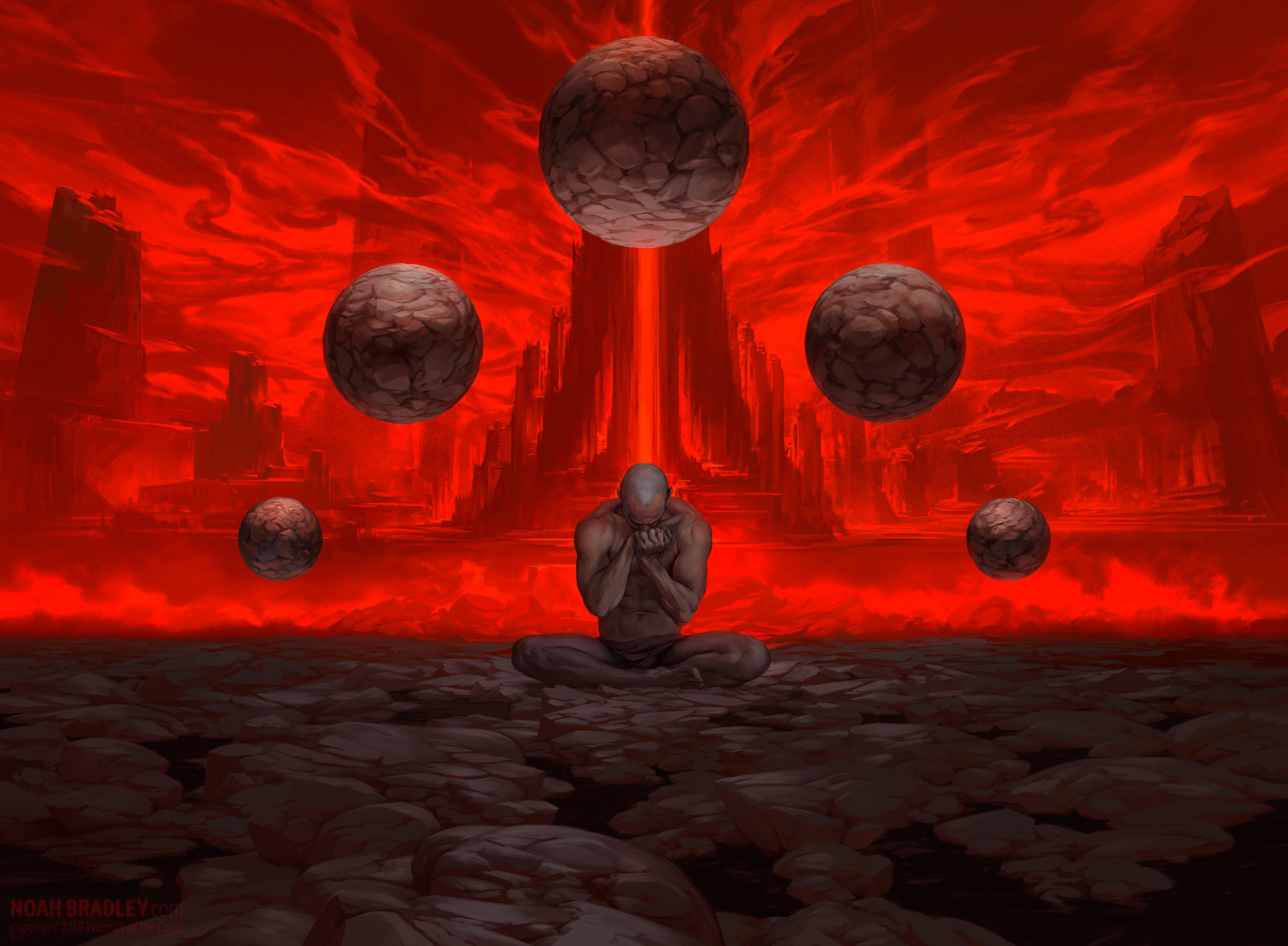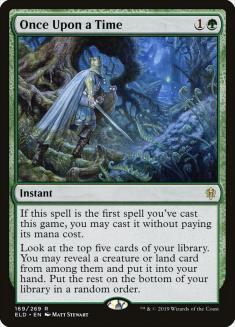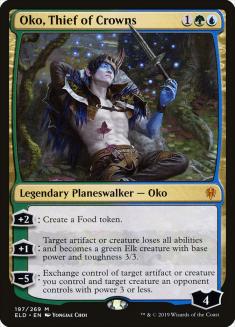If you blinked, you missed it. After making its mark in Pioneer and setting off all sorts of alarm bells in Modern, Underworld Breach brought its best game to Legacy and earned the quickest ban in the format in well over a decade. With Legacy mostly removed from official tabletop play, this briefest of revolutions was not televised – only the format’s devotees knew just how bad the situation was.
Planeswalkers (1)
Lands (16)
Spells (43)
- 4 Brainstorm
- 1 Lightning Bolt
- 4 Force of Will
- 2 Intuition
- 4 Brain Freeze
- 3 Orim's Chant
- 3 Predict
- 4 Lotus Petal
- 3 Lion's Eye Diamond
- 4 Ponder
- 2 Spell Pierce
- 4 Preordain
- 1 Sevinne's Reclamation
- 4 Underworld Breach
Sideboard

At a glance this seems like just another combo deck in the spirit of Show and Tell or Storm. It requires several specific cards to win and is weak to almost every typical angle of attack against combo: graveyard hate; Chalice of the Void; the deadly taxers ranging from Deafening Silence to Sanctum Prelate to Thalia, Guardian of Thraben; Collector Ouphe and Null Rod; even popular removal like Abrupt Decay tagging Underworld Breach. You’d be forgiven for thinking this was more of a gimmick than a menace.
Instead, Underworld Breach proved to be shockingly resilient. The central combo was compact enough to free up slots for more card filtering and protective measures like Orim’s Chant. It passed a key Legacy litmus test in the Delver matchup as Silence and Orim’s Chant are must-counter cards on possible combo turns, the central card costs just two mana and evades Pyroblast, and you don’t need cards in hand to win with Breach on the battlefield, so Lion’s Eye Diamond can force it through Daze and Spell Pierce.
In longer games, a “fair” Underworld Breach could draw several cards and recycle removal spells, making it easy to play the second half of combo-control especially in conjunction with Monastery Mentor or similar threats in a transformational sideboard. By shaving combo pieces and still having reliable access to all of them at once via Intuition, you could become a solid Jeskai Control deck with the cheapest and strongest “finisher” in the format. If you chose to go through the hate rather than around it, the blue card draw and selection spells that define Legacy made it easy to find a crucial Swords to Plowshares or Wear // Tear.
During its brief reign of terror, the format found ways to adapt to Underworld Breach – often by presenting must-answer permanents turn after turn or by building around specific cards like Karn, the Great Creator. In larger formats, there are tools to address any new threat and enough strategies exist that some will be naturally well-suited to keep it in check.
If the format has to shift or narrow radically, its diversity and health may still worsen as a result. If the offending deck promotes frustrating or repetitive gameplay – either in its own operation or because games against it focus too much on sideboard cards that throttle the game – a ban is justifiable even if the format is fine by other metrics. This one wasn’t fine. Underworld Breach dominated tabletop and online Legacy despite the best efforts of the players most familiar with the format.
This week’s Legacy Challenge on Magic Online is a window into a format taking on a new shape with the Underworld sealed again and finding ways to exploit the less outrageous cards from Theros Beyond Death.
Creatures (26)
- 4 Elvish Spirit Guide
- 4 Endless One
- 4 Eldrazi Mimic
- 4 Reality Smasher
- 4 Thought-Knot Seer
- 4 Matter Reshaper
- 2 Walking Ballista
Lands (24)
Spells (10)
Sideboard

Colorless Eldrazi has been a staple of Legacy for years and is a reliable choice when the format is in flux after big changes. Simple in theory and in practice, it’s a solid choice for players new to the format or hoping to avoid the intricacies of Brainstorm battles.
Like Eldrazi Tron in Modern, this deck can be fairly described as four Chalice of the Void and 56 other cards – Matter Reshaper is just as embarrassing in Legacy, but it does the job if half the opponent’s deck is uncastable. Chalice is not the format-breaker it has been at several points in Legacy’s past. The combo decks that fold to Chalice have not seen much success, while the Delver decks that were weakest to it have more answers like Abrade or Brazen Borrower and are less popular anyway due to their poor matchup against the midrange and control decks enabled by Arcum’s Astrolabe. Thankfully, these decks have enough draws that rely on Astrolabe for mana fixing or Brainstorm and Ponder for smoothing that Chalice can still steal free wins.
This list from Rodrigo Togores (the aforementioned Sharkcaster_Mage who refined Jeskai Breach into its final form) makes a clear statement about the aims of the deck. Other Constructed formats are free from the scourge of Once Upon a Time but it hasn’t shown up much in Legacy yet. Colorless Eldrazi always wants to start with a land that makes two mana and often needs specifically Thought-Knot Seer or Reality Smasher as its leading threat. Once Upon a Time improves these odds enough to earn a spot despite being virtually uncastable any time after the first turn – the only green source is Elvish Spirit Guide, which can itself be found with Once Upon a Time to help deploy Turn 1 Chalice for one.
Colorless Eldrazi is already willing to mulligan aggressively to find the good cards and not the other cards. Once Upon a Time presents a similar trade-off while making those best draws more likely. Togores’s removal of clunkers like Endbringer is in line with this philosophy. This list needs less mana to operate and has a lower risk of being stranded with an unnecessary virtual mulligan, making it easier to take actual mulligans.
Smaller innovations like Tumble Magnet – a versatile tool against mirrors, Griselbrand, and Equipment – help this list to make up the numbers when Chalice or other disruptive cards are dead in a matchup.
From the mind of Legacy innovator Callum Smith (@WhiteFacesmtg) comes an entirely new shell for both Once Upon a Time and Chalice of the Void:
Creatures (14)
Lands (27)
Spells (19)
- 2 Sylvan Library
- 4 Mox Diamond
- 4 Chalice of the Void
- 1 Life from the Loam
- 4 Green Sun's Zenith
- 4 Once Upon a Time
Sideboard

Ancient Tomb is the best enabler for a fast Chalice of the Void but finding a good backup for that role has always been a challenge. Mox Diamond is perfect for the job but the decks that want Tomb rarely want Diamond. Previous attempts to unite the two in a marriage of convenience have always led to a messy divorce but this shell has a brighter future.
Chalice decks tend to steer clear of one-drops (though the common absolutism that you can’t play any is short-sighted) and have a higher curve than most Legacy decks. The acceleration that makes Chalice a viable Turn 1 play gives an in-built solution to this problem, but the deck must be built carefully with this in mind.
Green Sun’s Zenith is the perfect way to bridge this gap, offering a tertiary form of ramp via Dryad Arbor as well as a useful payoff for this mana. Zenith was held back by a lack of cheap threats beyond Knight of the Reliquary (which carries its own deckbuilding restrictions) but the past year has been very kind to it. Collector Ouphe is the ideal hate card against many types of combo and Elvish Reclaimer is a stand-out in these land toolbox decks. Questing Beast made its Legacy debut at Grand Prix Bologna laughing at Ice-Fang Coatl and True-Name Nemesis. There have always been Exploration effects to find with Zenith but none let you splice a strong win condition into your deck the way Dryad of the Ilysian Grove does with Valakut, the Molten Pinnacle. Crucially, the quirks of layers mean that Dryad keeps its Prismatic Omen text even after losing its abilities to Oko, Thief of Crowns.
The biggest and bluntest tool in that box is Primeval Titan. The green Giant has been an option for years so why is it only showing up now? Dryad and Valakut help, but we find the real answer by shaking Arcum’s Astrolabe. In a format ruled by Daze and Wasteland, Primeval Titan is a pipe dream. Even if you found some way to force it through, there was no combination of lands that was sure to finish the job if Titan was removed and a non-flying 6/6 could rarely stabilize the battlefield on its own.
The arrival of Astrolabe gave Legacy midrange and control decks a way to stymie Delver’s aggression with the best tools across the colour pie without exposing themselves to Wasteland. These manabases can’t support Wasteland themselves and these decks lack other ways to remove lands beyond the occasional sideboard card. Cavern of Souls forcing through a game-winning threat becomes a reliable way to exploit that weakness and Field of the Dead lets Titan be that threat. Note the complete absence of Dark Depths and Thespian’s Stage, a seemingly perfect pair for Primeval Titan and the go-to finisher for Lands in the past.
The best new Zenith option isn’t even in this deck!
Creatures (17)
- 2 Noble Hierarch
- 1 Scavenging Ooze
- 1 Courser of Kruphix
- 3 Leovold, Emissary of Trest
- 4 Ice-Fang Coatl
- 2 Plague Engineer
- 2 Gilded Goose
- 1 Questing Beast
- 1 Uro, Titan of Nature's Wrath
Planeswalkers (3)
Lands (21)
Spells (19)

Creatures (9)
Planeswalkers (4)
Lands (20)
Spells (27)

Fresh off its victories in every other format, Uro, Titan of Nature’s Wrath is taking its game to the big leagues. Like delve, escape – as seen with Underworld Breach – is at its best in a format full of premium one-mana spells. These are the ideal follow-up to Uro on the same turn and ease the pain of paying three mana – a fortune in Legacy – for a card with no immediate impact. Although most Legacy decks have much lower land counts than their counterparts in Standard or Modern, the Brainstorms and Ponders that make escape so easy let you hit land drops when needed.
Karakas is excellent with and against Uro, undoing their investment or protecting yours from permanent removal like Swords to Plowshares. You can also build an expensive but recursive draw engine in the prolonged games that often occur between these decks.
Svaca, better known as Tomas Mar, showed the potential of Four-Color (at least!) Control in Legacy even before Astrolabe and offers an alternative model for how to build the archetype in this new ice age. Four-Color Control (often based in Bant or Sultai splashing Pyroblast in the sideboard) is the most popular and most variable deck in the format. No list is truly stock and both cards and colours are likely to change at any time.
It’s tough to make any definitive claims about your matchup against this family of decks when so much depends on individual card choices. Identifying general weaknesses is the best way to cover your bases here. For example, sources of card advantage or threats that dodge Pyroblast or Abrupt Decay and aren’t nullified by Oko, Thief of Crowns are tough to remove and can outpace the incremental advantage these decks try to rack up. Sylvan Library is a mainstay in green decks for that reason and this Sultai Control list features Bitterblossom and Nissa, Vital Force as a nod to the pseudo-mirror.
Creatures (10)
Planeswalkers (3)
Lands (19)
Spells (28)
- 4 Brainstorm
- 4 Lightning Bolt
- 4 Force of Will
- 1 Chain Lightning
- 4 Daze
- 4 Ponder
- 2 Spell Pierce
- 3 Preordain
- 2 Force of Negation
Sideboard

There’s nothing new to say about Delver of Secrets, still one of Legacy’s foremost gatekeepers. This list highlights just how ubiquitous Oko has become, clearing the incredibly high bar for a three-drop in a Delver deck and beating out the mighty True-Name Nemesis for that spot here.
Oko is a victim of its own success, having forced out cards that don’t line up well against it. Any deck that leans heavily on an unprotected artifact or creature must work hard to justify its own existence in a format ruled by Oko. The popular threats in the format are either much cheaper than Oko (and supported by cheap interaction to punish the Oko player), dodge Oko in some way, or leave something behind to go with your 3/3 Elk. Despite that, Oko is still the marquee threat in Legacy and a defining card in blue mirrors where a lot of the tactical positioning revolves around it.
Meanwhile, on the fringes of the format there are terrifying omens…
Doomsday loitered on the outermost orbit of Legacy before officially disappearing when Sensei’s Divining Top did. Thassa’s Oracle breathed new life into the deck by opening up much cleaner kills with Doomsday that don’t need to hedge against removal.
Arcum’s Astrolabe is a workhorse here too. In Four-Colour Control it offers a shallow commitment to each colour, letting Abrupt Decay and Teferi, Time Raveler work together. Doomsday has always been held back by its namesake’s restrictive mana cost, making Dark Ritual as important for its fixing as its acceleration. Arcum’s Astrolabe lets Doomsday enjoy the security of fetching basic Island against Wasteland while still casting its all-important spell on time.
That’s just the tip of the iceberg for this first glimpse at a new Legacy. Format staples like Death and Taxes, Elves, and Show and Tell as well as old throwbacks in Standstill and new underdogs like Arclight Phoenix all show up in these results. After throwing off two very different tyrants in Wrenn and Six and Underworld Breach, Legacy is in a much healthier state. There’s no better time to give it a try on Magic Online!





